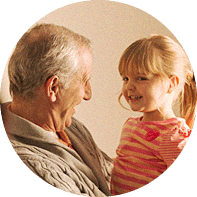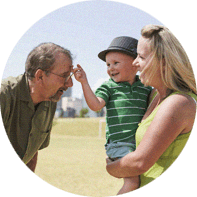
If you go to any community in Alberta and ask around about what matters to people, a neighbourly concern for the wellbeing of others is near the top of the list. We know, because we asked.
And if you ask about the wellbeing of kids and the importance of interacting with them, you get funny looks. Like, “Sure, of course it’s important to spend time with kids. Isn’t it obvious?”
But new research is shedding scientific light on what most of us always suspected from the start: playing with young kids isn’t just a fun way to pass the time. It actually changes their brains in ways that affect their health for a lifetime. And that has consequences for our families, our communities, and future generations.
You’re probably aware that our genes – what we inherit from our parents at conception — have a lot to do with our health and wellbeing throughout life. But genes alone don’t tell the whole story. The brains we’re born with change based on the experiences we have in our earliest years. Nurturing experiences build strong brains that support good health throughout life. Neglectful or abusive experiences at a young age damage the structure of the brain, which can lead to health problems later in life.
Scientists liken this process to building a house. In order for the walls and roof to be stable and square, they must be built on a strong and level foundation. Brain development requires a good base too — positive interactions repeated through a young child’s life are the bricks that build a foundation for all future development. That means it’s important to get the early years right, because even as adults, our wellbeing has a lot to do with the way our brain architecture was shaped early in life.
Watch to learn more about building brains.

Building strong brain architecture doesn’t take a medical degree. You just need to make a connection with a child, spend quality time with them, and have fun. Scientists call these interactions “serve and return” because the back-and-forth nature of a healthy interaction is like a tennis match.
Every time you share a laugh with a child, make eye contact, or have a conversation, you’re practicing serve and return.

You may not realize it, but you have the ability to improve health and help prevent illness in your community for decades and beyond. The simple act of serve-and-return play with kids, repeated through childhood, strengthens their brains so they are less vulnerable to health problems as adults. The long-term benefits are better physical health, improved mental health and even the prevention of addiction. Children are the next generation of parents and business leaders, farmers and scientists, so it’s important to guard all kids in the community against toxic stress and to nurture their bodies and brains.

Strong brains are built by supportive relationships. That means it’s up to parents, families, daycares, schools, community groups — heck, building brains is up to all of us. Read below for examples of what people are doing in Alberta communities to support kids and help build brains.

Grandpa and Ava read a story.

Grandma and Lily share a secret.

Grandma welcomes Henrik to the world.

Great Uncle Dave breaks in a new cowboy.

Grandpa explains the facts.

Grandma and Connor read about birds.

Grandpa and Rémy blow bubbles.

Uncle Louis and Ben fly a kite.

Isabelle and her big friend Hannah find rose petals.

Learn more about brain development.